
Portrait of Fermín Francisco de Ustaríz, 1723, oil on canvas, 198 x 128 cm (Pinacoteca Universidad de Concepción)
How might a portrait make a case for the authority and reliability of a youthful bureaucrat at the periphery of the Spanish empire in the early 18th century? A painting of Fermín Francisco de Ustaríz (or Uztaríz) does just this. The painting situates its subject in relation to the remote Chilean town, Concepción—where he was the governor—while also presenting him as a cosmopolitan official in trending European fashions. This depiction of Fermín at approximately twenty-eight years of age is among the earliest surviving paintings to represent a political figure in the General Captaincy of Chile, a territory of the Spanish Empire that was, initially, part of the Viceroyalty of Peru (which had Lima as its capital).
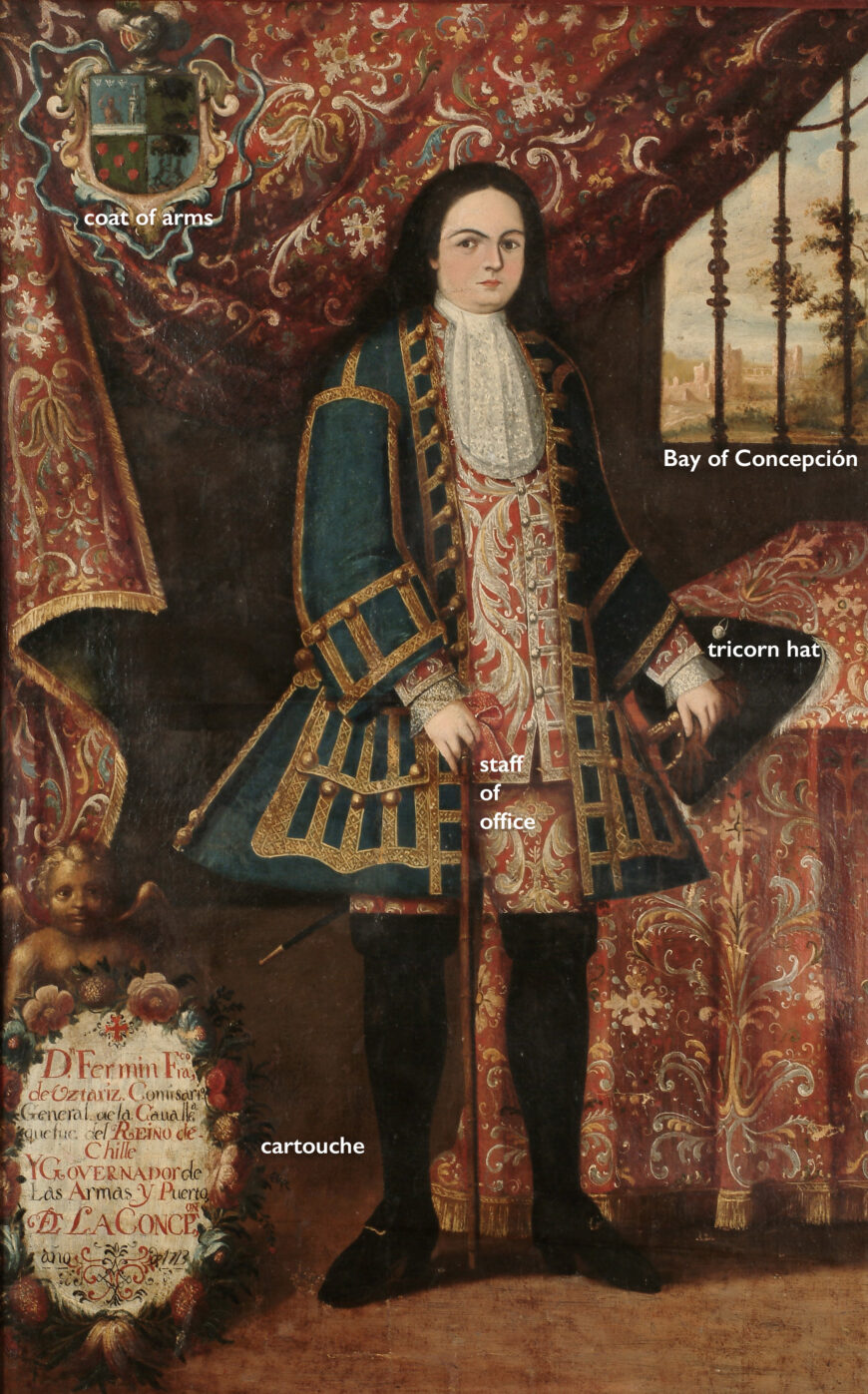
Portrait of Fermín Francisco de Ustaríz (annotated), 1723, oil on canvas, 198 x 128 cm (Pinacoteca Universidad de Concepción)
The portrait
Fermín is portrayed in a richly adorned interior setting as a confident, even haughty official who holds the viewer’s gaze. Characteristic of the viceregal portraits produced in 18th-century Lima, Fermín stands alongside a table, and a draped curtain serves as a backdrop for his familial coat of arms. An elaborate cartouche in a stunning floral frame held upright by a golden angel in the lower left outlines Fermín’s posts: general commissioner of the Chilean cavalry and governor of Concepción. Fermín is surrounded by emblems of his authority. He casually leans on his staff of office with his right hand and touches his sword with his left hand, while his left elbow seems to make contact with a tricorn hat arranged on the table. Over his left shoulder, an open window reveals a vista of the town of Concepción with the Bay of Concepción in the background.

Cartouche with floral frame (left) and Ustaríz coat of arms (right), details of Portrait of Fermín Francisco de Ustaríz, 1723, oil on canvas, 198 x 128 cm (Pinacoteca Universidad de Concepción)
The Ustaríz coat of arms in the upper left corner of the portrait is an iconographic reference to Fermín’s Spanish birth that links him to the successes of his forefathers. In his childhood, Fermín resettled in Chile with his father Juan Andrés de Ustaríz, an affluent Spanish merchant who built an impressive political career in South America, eventually becoming governor of Chile. During Fermín’s teenage years, his father assigned him prestigious military offices for which he was certainly underqualified, and as a result, Fermín struggled to earn the respect of the troops in his command.
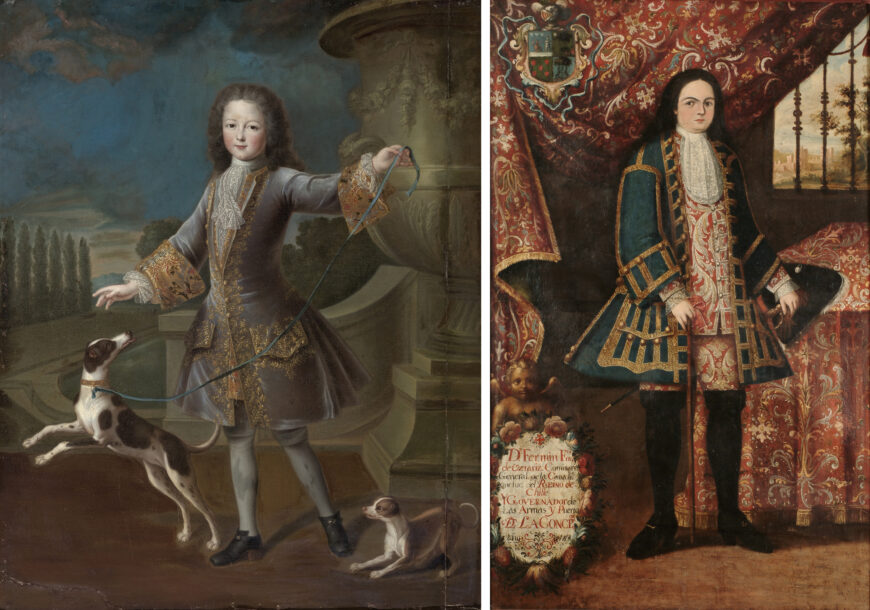
Left: Pierre Gobert, Portrait of Louis XV with Two Dogs, c. 1715, oil on canvas, 164.5 x 130 cm (private collection); right: Portrait of Fermín Francisco de Ustaríz, 1723, oil on canvas, 198 x 128 cm (Pinacoteca Universidad de Concepción)
Fermín’s rapid rise might have inspired the commissioning of a portrait that boosted his reputation and showed he was capable of governing Concepción. By the time this portrait was painted, Fermín’s father had passed away, leaving him as the youthful figurehead of a powerful Spanish-Chilean family with political and mercantile connections in Spain and France. It is intriguing that Fermín’s full facial features, youthful bloom, and French-style three-piece ensemble are all suggestive of well-known portraits of the era showing Louis XV, the heir of Louis XIV who inherited the French throne at the tender age of five.
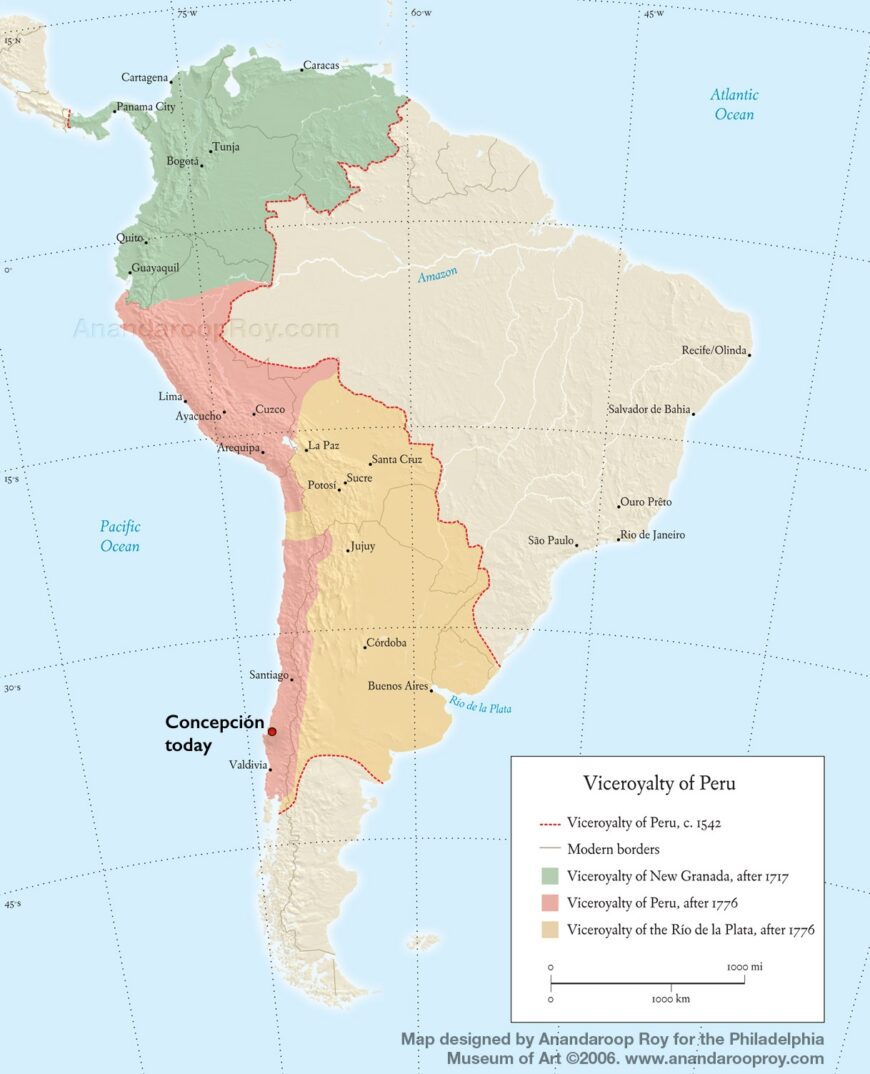
Map showing the Viceroyalty of Peru (Mapping Globalization project, © 2006 Anandaroop Roy)
Concepción, Chile
Seen through the window behind Fermín, a view of Concepción visually aligns him with the critical yet remote border town that he governed. Central to its role as a stronghold, Concepción is situated at the mouth of the Biobío River, the natural feature that demarcated colonial Chile’s contentious boundary with the Indigenous Huilliche population. Furthermore, and as suggested by the luxurious textiles that surround him, Fermín administered an critical port town with commercial connections to Lima and France.
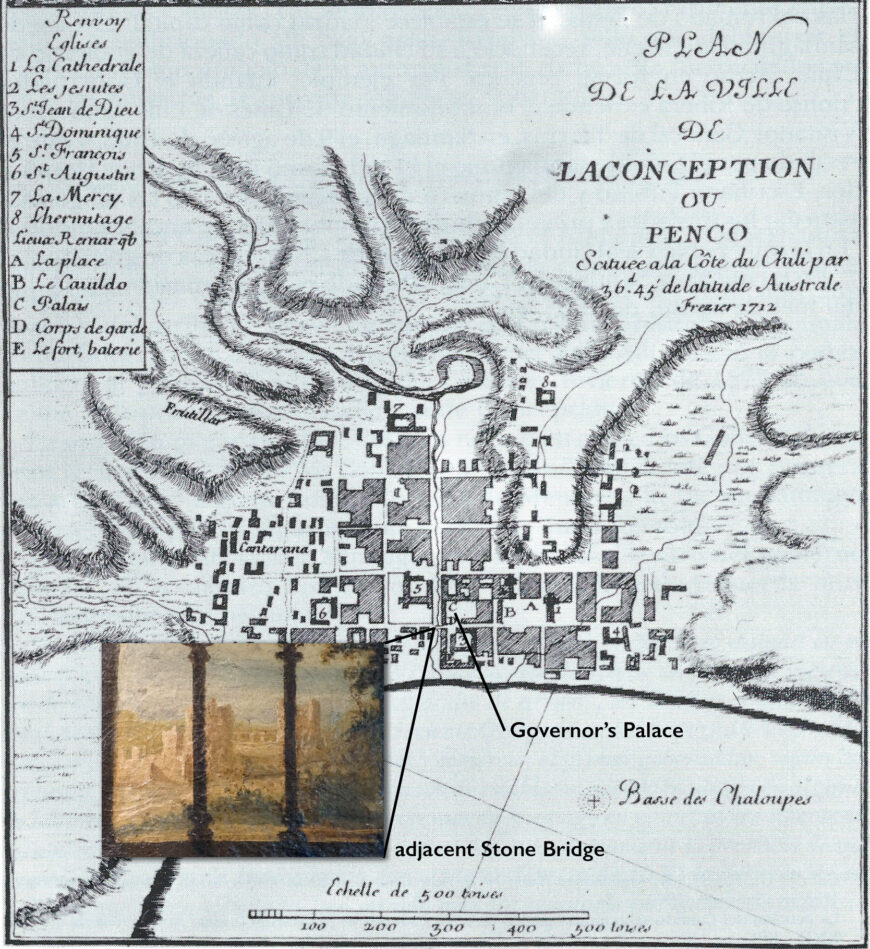
Amédée Frézier, Plan and View of Concepción, Chile, 1712, and bridge detail from Portrait of Fermín Francisco de Ustaríz, 1723, oil on canvas, 198 x 128 cm (Pinacoteca Universidad de Concepción)
Fermín’s portrait includes a sporadic visualization of a town that would soon be abandoned. Because of its susceptibility to tsunamis, during the 1760s local officials agreed to reestablish Concepción in the nearby Valley of Mocha where it is situated today. The barred window behind Fermín frames a vista of one of early Concepción’s most identifiable landmarks—the formidable stone bridge that unified its northern and southern sectors. The location of this bridge and the estuary that flowed beneath it on its course to the bay are indicated in a map of Concepción by French engineer Amédée Frézier. This map situates the bridge in close proximity to the governor’s palace, an arrangement that indicates Fermín’s likeness was staged within this ostentatious residence.
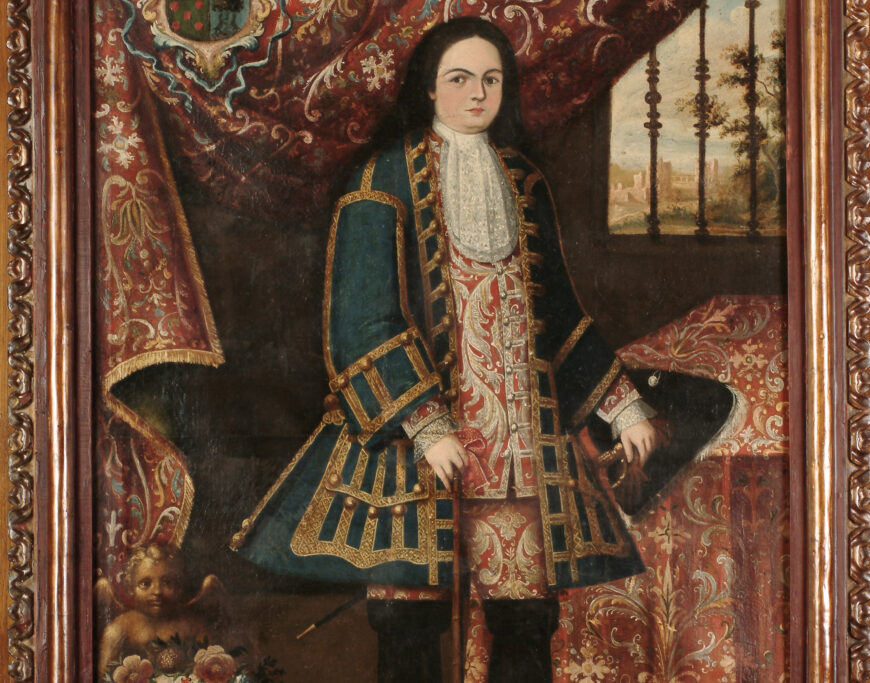
Fermín’s lavish clothing and textiles (detail), Portrait of Fermín Francisco de Ustaríz, 1723, oil on canvas, 198 x 128 cm (Pinacoteca Universidad de Concepción)
Frenchifying Concepción: garments and textiles
Another noteworthy feature of Fermín’s portrait is the opulence of his clothing and the decorative textiles of his surroundings. These details align Fermín with European trends of the era by depicting the youthful governor in the ostentatious dress favored by the French court, a style that had recently arrived in Chile. To promote his power and social standing, he wears the trending French-style three-piece suit or consisting of a slim-fitting coat, waistcoat, and breeches. The painter has emphasized the verticality of this elegant ensemble by flattening the torso and has drawn attention to the flared sides of the jacket that were the fashionable cut of the era. The midnight blue jacket of fine fabric and pocketflaps trimmed in gold embroidery all suggest princely wealth. A diaphanous lace cravat and cuffs were also obtained at great cost, and heeled shoes with gold buckles were common footwear to accompany such a suit.
In an era when floral patterns for men’s clothes were on the decline in Europe, Fermín’s flamboyant waistcoat and breeches border on being unfashionable. Yet they function to draw our eye to the other textiles that adorn the governor’s palace. The curtains, tablecloth, and rug in spirited floral motifs of white, yellow, blue, and green set against a opulent carmine background evoke the block-printed fustian popularized in France during this era.
The portraits produced in the Viceroyalty of Peru expressed the social status and achievements of the elite and could even respond to the specific requirements of the sitter. Despite his youth and the remoteness of the town he governed, this likeness of the governor of Concepción projects his secure perception of his place within society, his wealth and success, and his worldliness. Finally, through the display of fashion and luxury obtained on trans-Atlantic networks, the town of Concepción is presented as a well-connected cosmopolitan center rather than an unstable backwater.

